Last updated: March 5, 2024
Have you ever noticed a horse sleeping standing up and wondered why? As an experienced horse owner and author on equine behavior, I’ve discovered that their sleep patterns are intricately linked to survival instincts.
While horses can doze off on their feet, deep REM sleep requires them to lie down—a behavior rooted in avoiding predators. This fascinating survival strategy not only highlights their complex nature but is also crucial for their care.
Join me as we explore the evolutionary significance behind this behavior, offering insights for both seasoned equestrians and horse enthusiasts alike.

The Phenomenon of Horse’s Standing Sleep
Horses have the remarkable ability to sleep both standing up and lying down, a trait not commonly found in many large animals.
Horses’ Unique Sleep Behavior:
- Standing Doze:
- Light sleep phase while standing.
- Partial alertness maintained.
- Stay Apparatus:
- Locks leg joints to prevent collapsing.
- Allows muscle relaxation in standing position.
Deep Sleep Requirements:
- REM Sleep:
- Necessary to lie down for deep sleep.
- Characterized by rapid eye movement.
- Duration:
- Occurs in short bursts.
- Totals about 2-3 hours daily.

Understanding the Stay Apparatus
The stay apparatus is the remarkable mechanism that enables horses to doze while remaining on their feet.
Key Features of the Stay Apparatus:
- Mechanism Design:
- A complex system of tendons and ligaments.
- Enables horses to lock their leg joints.
- Functionality:
- Supports the horse’s body while standing.
- Prevents leg muscles from tiring.
How It Works:
- Locking Mechanism:
- Activated when the horse relaxes.
- Keeps the legs in a standing position without effort.
- Energy Efficiency:
- Reduces the need for constant muscle use.
- Allows horses to rest while still standing.
Video: How Horses Sleep Standing Up.
In this YouTube video, BJ Rickard, a respected expert in horses, simplifies the mystery of horses’ ability to sleep while standing. He offers a clear explanation, using a live horse to demonstrate the intricate mechanics that keep these animals upright while sleeping.
Adaptation Benefits:
- Safety in Rest:
- Enables quick response to threats.
- Ideal for prey animals like horses.
- Muscle Relaxation:
- Supports rest without full sleep.
- It prevents collapsing during dozing.
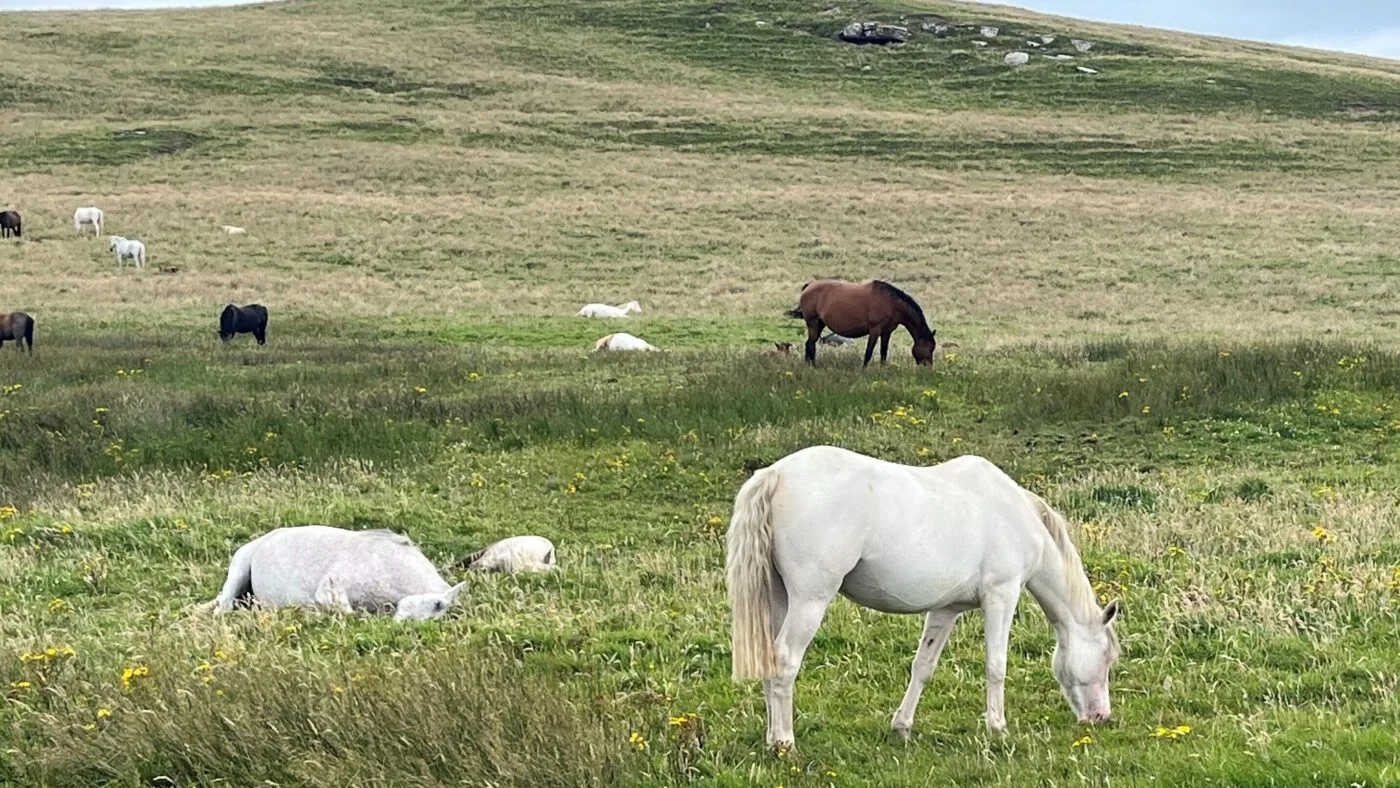
Sleeping Patterns of Horses
- Standing Dozing:
- Engage in light sleep while standing.
- Stay apparatus allows for muscle relaxation.
- REM Sleep:
- Achieved in a lying down position.
- Necessary for deep, restorative sleep.
Frequency and Duration:
- Intermittent Napping:
- Horses nap multiple times, day and night.
- Total REM sleep is about 2-3 hours daily.
- Adaptability:
- Sleep patterns adjust to the environment and herd dynamics.
Comparison with Other Animals:
- Unique to Horses:
- Most large animals don’t sleep standing.
- Horses’ ability is rare among large mammals.
- Contrast with Predators:
- Predators like lions have prolonged sleep periods.
- Horses’ sleep is more fragmented due to vigilance.

Evolutionary Advantages
Why Sleeping Standing Up Benefits Horses:
- Quick Escape:
- Enables immediate response to predators.
- Crucial for survival in the wild.
- Energy Conservation:
- Standing sleep requires less energy than getting up from lying down.
- Efficient for large animals like horses.
Predator Avoidance:
- Vigilance:
- Maintains a state of alertness even while resting.
- Essential for detecting potential threats early.
- Herd Safety:
- Some horses sleep while others keep watch.
- Enhances the safety of the entire herd.
Adaptation for Survival:
- Evolutionary Response:
- Developed over centuries as a survival mechanism.
- Reflects horses’ nature as prey animals.
- Environmental Adaptation:
- Particularly beneficial in open plains and grasslands.
- Adapted to environments where threats can appear suddenly.
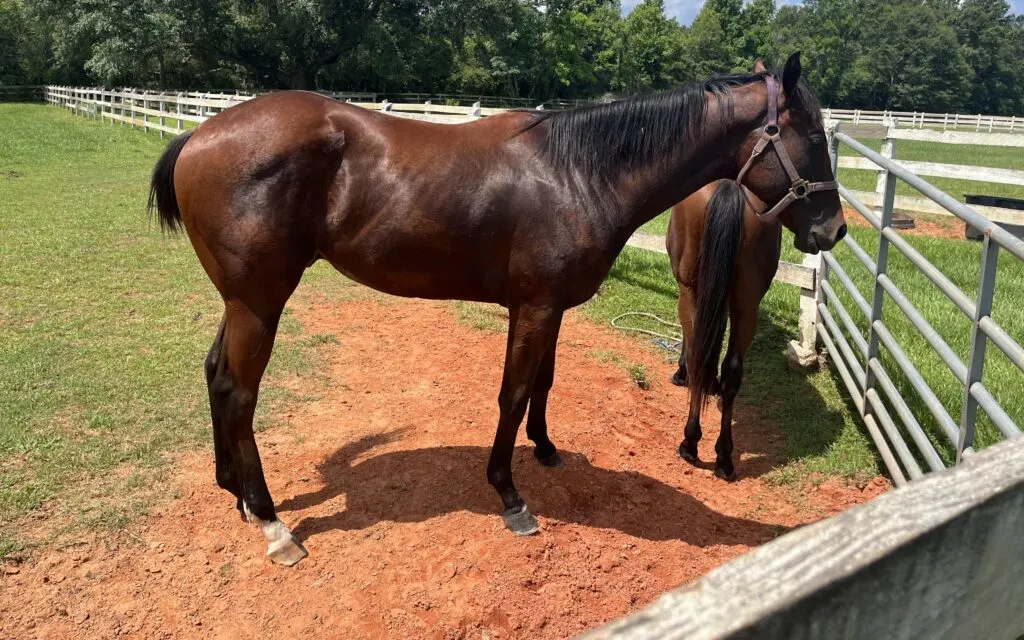
Health Implications of Standing Sleep in Horses
- Musculoskeletal Health:
- Standing sleep reduces prolonged pressure on the body.
- Helps prevent circulatory issues and muscle stiffness.
- Alertness and Safety:
- Maintains a state of readiness, which is crucial for herd animals.
Balance of Sleep Types:
- Importance of REM Sleep:
- Lying down sleep is vital for deep restorative processes.
- Affects mood, memory, and learning in horses.
- Risk of Sleep Deprivation:
- Lack of REM sleep can lead to stress and behavioral issues.
- Continuous monitoring of sleep patterns is essential.
Insights:
- Health Assessments:
- Veterinarians emphasize regular check-ups for sleep health.
- Early detection of sleep disturbances can prevent larger health issues.
- Environmental Factors:
- Stable conditions and herd dynamics influence sleep quality.
- Adequate space and comfort are key for healthy sleep patterns.
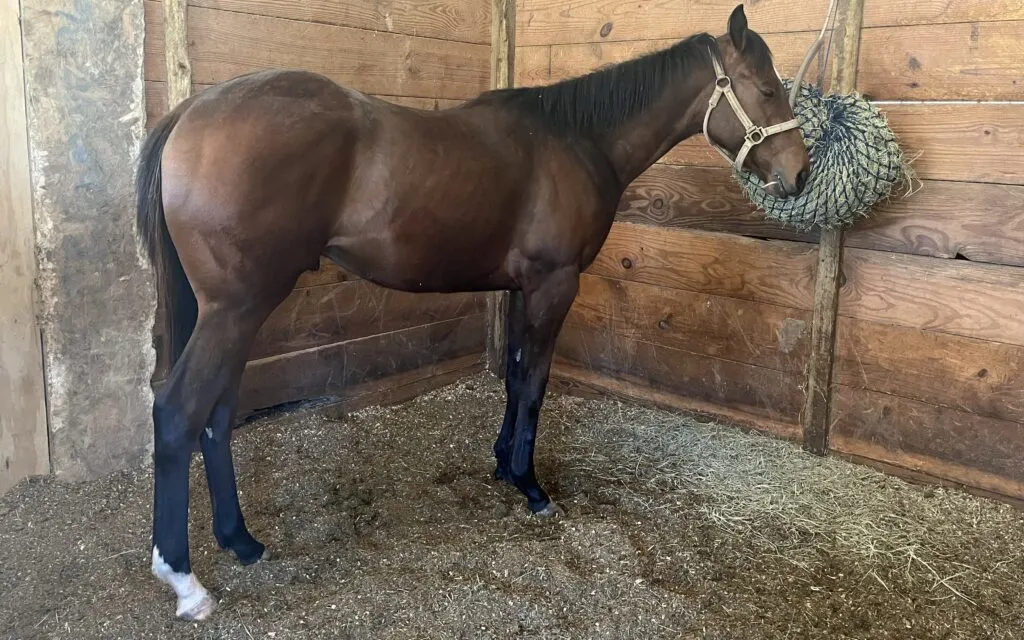
Behavioral Aspects
- Domesticated Horses:
- Often have more opportunities to lie down for REM sleep.
- Sleep patterns can be influenced by stable conditions.
- Wild Horses:
- More reliant on standing sleep for safety.
- Adapted to quickly awaken and flee from predators.
Herd Behavior and Sleep:
- Collective Vigilance:
- In herds, some horses stand guard while others rest.
- Ensures continuous surveillance against threats.
- Social Dynamics:
- Dominant horses may sleep more, reflecting herd hierarchy.
- Younger and lower-ranking horses often take on guard roles.
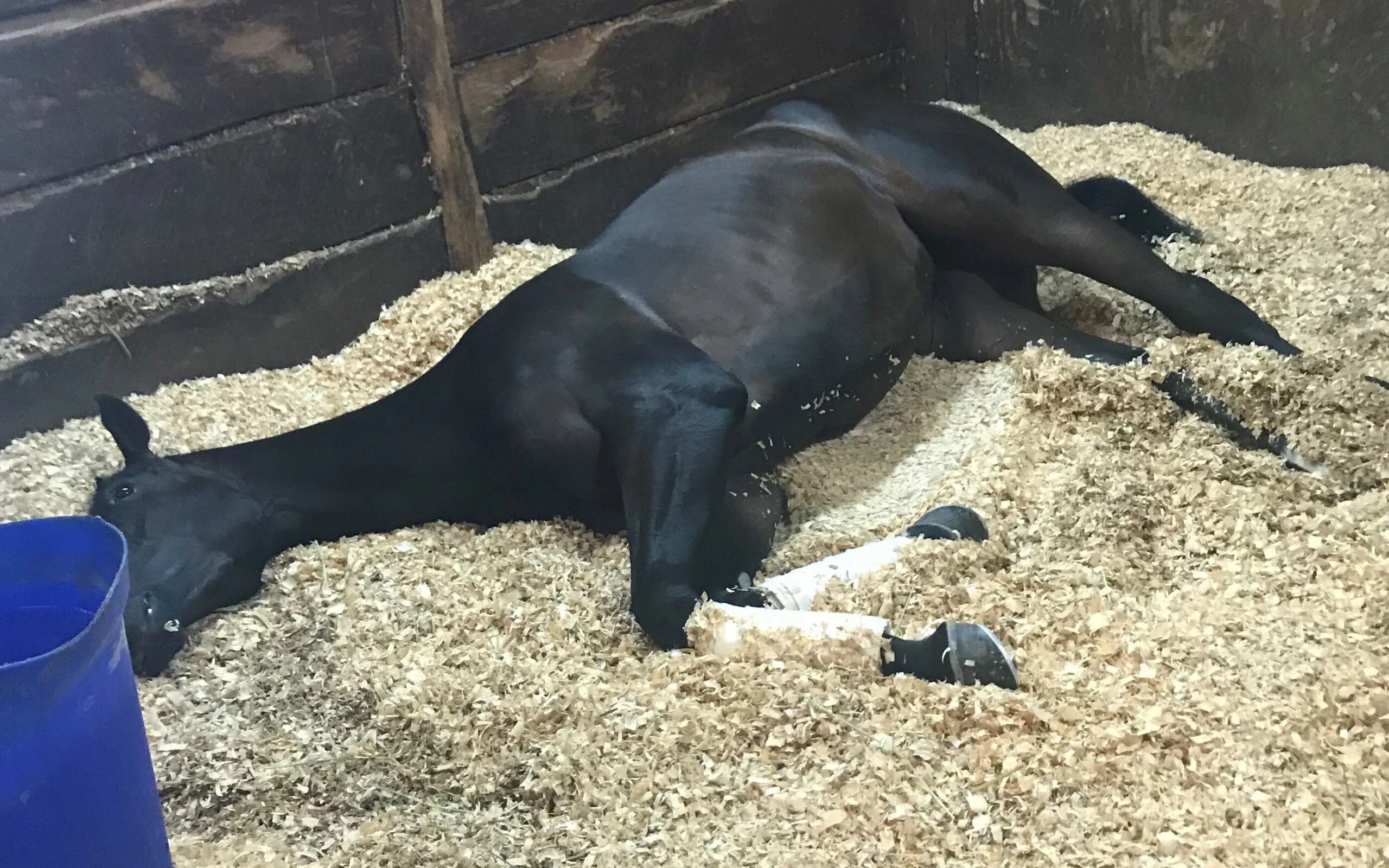
Frequently Asked Questions
Do horses really sleep standing up?
Yes, they do! Horses have a unique ability to doze while standing, thanks to their stay apparatus.
Why do horses sleep standing up?
Horses sleep standing up as a survival tactic. It allows them to remain alert and escape quickly in case of predators.
Is it bad for horses to sleep standing up?
Sleeping standing up is normal for horses and allows quick escape from predators. However, they also need to lie down for REM sleep.
How do horses sleep standing without falling over?
Horses can lock their leg joints using the stay apparatus, preventing them from collapsing while they rest.
Do horses need a lot of sleep?
Horses require less sleep than humans, typically around 3 hours per day, including short naps and REM sleep. Younger horses may sleep more.
Do horses lie down to sleep at all?
Yes, they do. Horses require REM sleep, which is achieved by lying down. They lie down for shorter periods, totaling about 2-3 hours each day.
Are there any differences between domesticated and wild horses when it comes to sleep?
Yes, wild horses often rely more on standing sleep for safety, while domesticated horses may have more opportunities for lying down sleep.
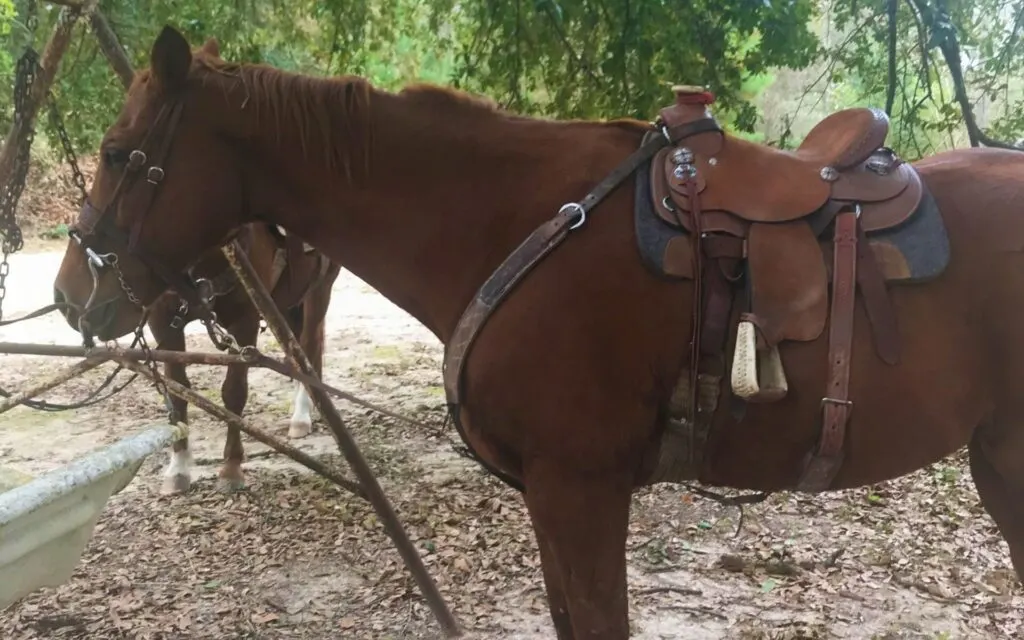
Conclusion
The phenomenon of horses sleeping while standing up is a testament to their remarkable adaptation and survival strategies. We’ve explored the key aspects of this behavior, shedding light on why horses doze in a standing position and the vital role it plays in their well-being.
As prey animals, horses have evolved this unique ability over centuries to stay alert and respond swiftly to potential threats, ensuring their safety in the wild. Understanding this behavior is not only intriguing but also essential for horse care and welfare.
It reminds us of the intricate balance between nature and nurture in our equine companions. By providing them with environments that allow for both standing and lying sleep, we contribute to their physical and mental health, ensuring they lead comfortable and stress-free lives.
Quiz: Busting Horse Sleep Myths (Answers below)
References and Further Reading
For those eager to delve deeper into this topic, here are some authoritative sources and suggested readings:
- Greening, L. et al. The effect of altering routine husbandry factors on sleep duration and memory consolidation in the horse. Appl Anim Behav Sci. 2021.
- Bertone, J. Excessive Drowsiness Secondary to Recumbent Sleep Deprivation in Two Horses. Vet Clinics: Equine Practice. 2006
- Ahern, T. Sleep Attacks with Associated Sleep Terrors in a Six-Year-Old Thoroughbred Gelding. J Vet Sci. 2018.
- Journal of Equine Veterinary Science, (2019), A Preliminary Study Investigating the Influence of Auditory Stimulation on the Occurrence of Nocturnal Equine Sleep-Related Behavior in Stabled Horses
- Front Vet Sci. (2022), A Review of Equine Sleep: Implications for Equine Welfare.
- U.S. Department of the Interior (2009), Quantifying Equid Behavior—A Research Ethogram for Free-Roaming Feral Horses
These sources offer a wealth of knowledge for those passionate about understanding horses and their unique behaviors, contributing to improving horse welfare and care practices.
Here’s a table that summarizes key aspects of horse sleep patterns:
| Aspect | Description |
|---|---|
| Sleeping Position | Horses sleep both standing and lying down. |
| Standing Sleep | Irritability, lethargy, and, in severe cases, collapsing. |
| Lying Down Sleep | Necessary for REM sleep; horses must lie down to achieve deep sleep. |
| Duration of Sleep | Total of about 3 hours per day, including short naps and REM sleep. |
| REM Sleep | Occurs when lying down; essential for cognitive function and overall health. |
| Evolutionary Reason | Standing sleep allows for quick escape from predators, a trait from their prey animal ancestry. |
| Health Implications | Lack of REM sleep can lead to health issues like weakened immunity and behavioral changes. |
| Stable Environment | A comfortable and safe stable is crucial for enabling horses to lie down for REM sleep. |
| Exercise and Diet | Regular exercise and a balanced diet contribute to healthier sleep patterns. |
| Signs of Sleep Deprivation | Irritability, lethargy, and in severe cases, collapsing. |
Survey Answers
Answers: 1. True, 2. False, 3. True, 4. False
